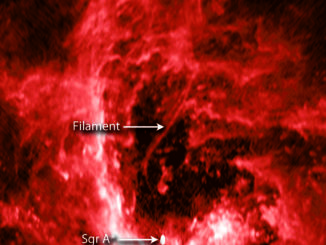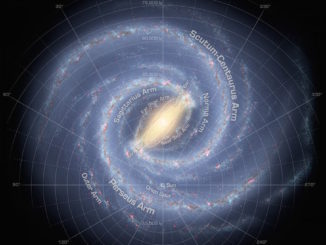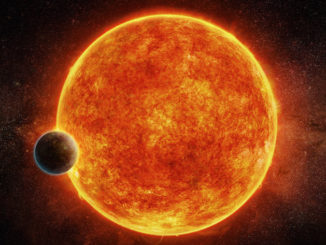
Harvard-Smithsonian Center for Astrophysics




Astronomers discover ‘heavy metal’ supernova rocking out
Many rock stars don’t like to play by the rules, and a cosmic one is no exception. A team of astronomers has discovered that an extraordinarily bright supernova occurred in a surprising location. This “heavy metal” supernova discovery challenges current ideas of how and where such super-charged supernovas occur.



A middleweight black hole hides at center of giant star cluster
All known black holes fall into two categories: small, stellar-mass black holes weighing a few Suns, and supermassive black holes weighing millions or billions of Suns. Astronomers expect that intermediate-mass black holes weighing 100 – 10,000 Suns also exist, but so far no conclusive proof of such middleweights has been found. Astronomers have announced new evidence that an intermediate-mass black hole (IMBH) weighing 2,200 Suns is hiding at the center of the globular star cluster 47 Tucanae.

Our galaxy’s black hole is spewing out planet-size ‘spitballs’
Every few thousand years, an unlucky star wanders too close to the black hole at the center of the Milky Way. The black hole’s powerful gravity rips the star apart, sending a long streamer of gas whipping outward. That would seem to be the end of the story, but it’s not. New research shows that not only can the gas gather itself into planet-size objects, but those objects then are flung throughout the galaxy in a game of cosmic “spitball.”

A stellar circle of life near Cygnus X-3
A discovery that provides a new way to study how stars form has been captured in a new portrait from NASA’s Chandra X-ray Observatory and the Smithsonian’s Submillimetre Array (SMA). A cloud that is giving birth to stars has been observed to reflect X-rays from Cygnus X-3, a source of X-rays produced by a system where a massive star is slowly being eaten by its companion black hole or neutron star.

Forming stars in the early universe
The first stars appeared about 100 million years after the Big Bang. When the universe was about 3 billion years old, star formation activity peaked at rates about ten times above current levels. Why this happened, and whether the physical processes back then were different from those today, are among the most pressing questions in astronomy.
